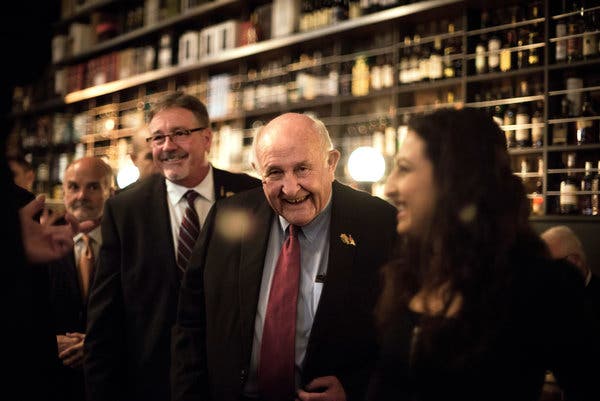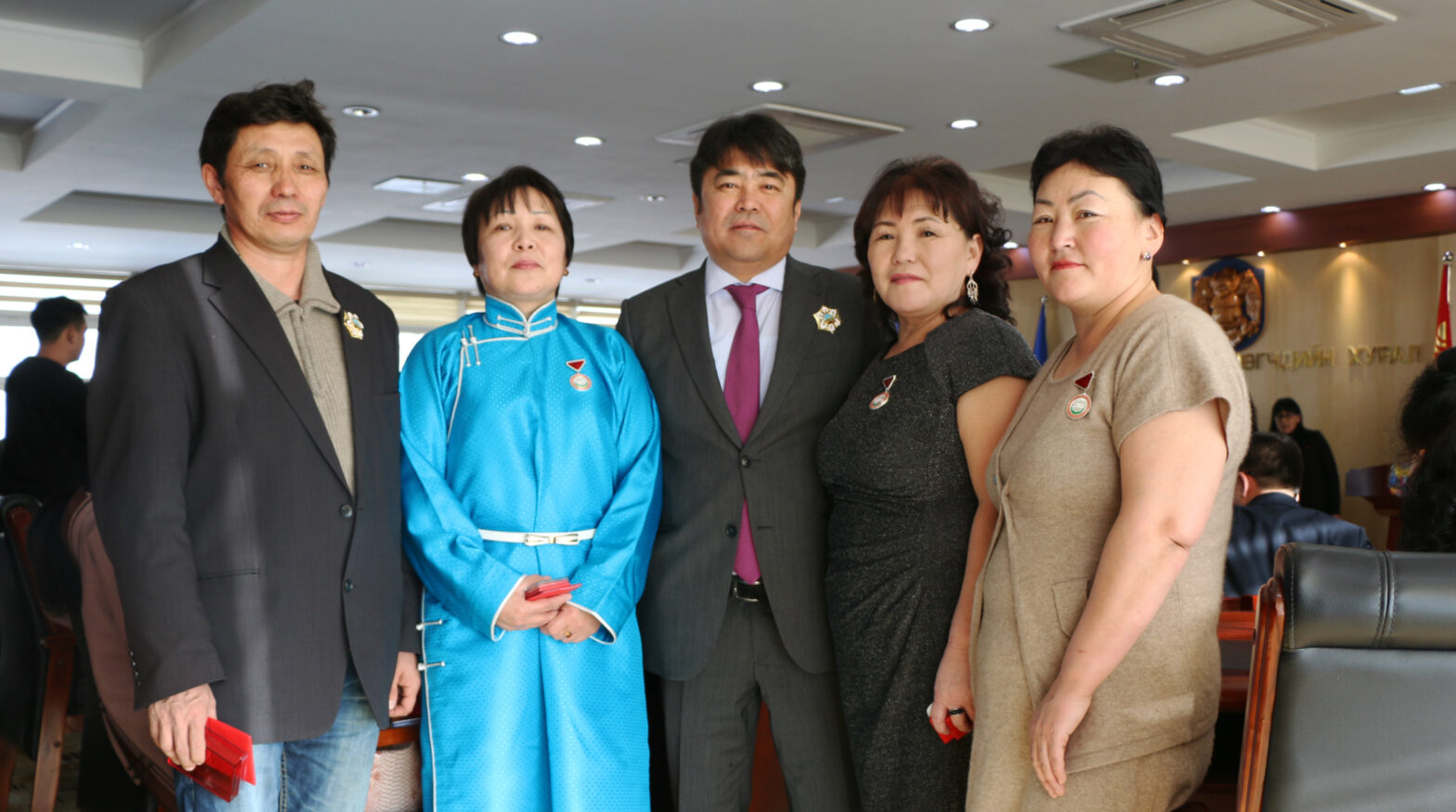- Feb. 20, 2015
WASHINGTON — At 80, Jimmy Russell finds his knees are not quite what they used to be. So he enjoys a comfortable chair where his admirers — millennial mixologists, their arms covered in tattoos; moneyed moms who have jettisoned their cosmopolitans for manhattans; and random professionals toting rare bottles of Wild Turkey — may approach to greet him.
Mr. Russell, the master distiller at Wild Turkey, ensconced himself this month at the Jack Rose Dining Saloon, a popular bourbon bar here, and held impromptu court, smiling with the sweetness of an old-fashioned at everyone who came to pay respect. “There is only one of you in the world,” said Lindsy Lee, 35, a lawyer and bourbon lover who came to meet him.
For decades, Mr. Russell toiled among the barrels and yeast in the quiet of the horse country of Kentucky all but unnoticed, as his father and his grandfather did. But the resurgence in whiskey has turned Mr. Russell, one of the last remaining original master distillers broadly responsible for the development and growth of the modern-era bourbon business, into an octogenarian cult figure.

Bartenders from around the country swarm him at every bar, bourbon festival and marketing event he visits, lapping up tales about old bottles of bourbon and the pre-Prohibition history of storied Kentucky distilleries, which Mr. Russell knows intimately. Buffs like Ms. Lee revere Mr. Russell and the other master distillers, as well as founders of a new crop of distilleries, who are known as bourbon barons, much the same way diners have apotheosized the nation’s best-known chefs, with an almost familial affection.
“Meeting Jimmy is one of the thrills of my life,” said Michael Stanley, who drove more than two hours from Salisbury, Md., where he tends bar, after seeing on Facebook that Mr. Russell and other master distillers and bourbon executives would gather after being honored by Senator Mitch McConnell of Kentucky, the majority leader, at a reception downtown. “All the legends are here.”
The excitement stemmed in large part from the resurgence of whiskey. While vodka has long outpaced bourbon in sales, vodka sales rose a mere 1.1 percent from 2012 to 2013, according to the Distilled Spirits Council of the United States, while sales of bourbon and Tennessee whiskey rose 12.8 percent over the same period. The increase is a result of the efforts of the master distillers.
“It’s just so wonderful to see all these young people enjoying bourbon,” Mr. Russell said as revelers in sexy tank tops (women) and artisanal facial hair (men) sipped premium bourbons and sat attentively to hear him reveal the granular history of several rare bottles of bourbon, down to the distiller who made them decades ago. “Especially the ladies,” he added, noting that women have been a big force in the resurrection of brown liquor.

Mr. Russell’s two greatest contemporaries — Booker Noe of the Jim Beam family and Elmer T. Lee of the Buffalo Trace distillery, who are credited with inventing small-batch and single-barrel bourbons — are gone now, and Parker Beam of Heaven Hill has retired, leaving Mr. Russell the oldest master distiller still working.SIGN UP FOR THE COOKING NEWSLETTER: Daily inspiration, delicious recipes, and other updates from Sam Sifton and The New York Times, right to your inbox.Sign Up
The new masters, including the sons of Mr. Noe and Mr. Beam, along with Chris Morris of Woodford Reserve and Jim Rutledge of Four Roses, have picked up the tradition, and their own fan base. Craig Beam and Denny Potter of Heaven Hill have come in Mr. Beam’s stead, and Greg Davis of Maker’s Mark carries the torch for those bottles sealed in red wax. Tom Bulleit, the founder of Bulleit Bourbon, falls into the category of the modern bourbon baron. Though he is not a master distiller, his name is on the bottle, and bourbon fans gravitate to him. All of these men travel the world touting American whiskey and many times find themselves together, like a band of brothers.
Bourbon distilling has long been a family tradition, said Michael R. Veach, a bourbon historian and author of “Kentucky Bourbon Whiskey: An American Heritage.” “It really wasn’t until after Prohibition that you saw an effort to train other people in distilling,” he said. For much of the mid- to late-20th century, it was a sleepy business, though still an important Kentucky craft.
Mr. Russell and his contemporaries continued to teach their children the art of minding the grain mix and yeast mash, the difference among types of barrels used for aging and how a bourbon ought to smell. “Dad taught people how to properly smell bourbon,” Mr. Noe said, which includes inhaling it with the mouth as well as the nose.

Watching as Americans swilled vodka and beer during the 1980s, bourbon distillers realized that by returning to some pre-Prohibition bottling traditions and embracing the small-batch production and marketing efforts that had helped other beverages thrive, they could break bourbon out if its old-man image.
“My father saw single-malt scotches were doing really well,” said Fred Noe, the master distiller at Jim Beam and the son of Booker Noe. “And in his mind, if high-end bourbons with their special taste profiles were presented to the public in the correct way, he thought people would enjoy them.”
His father went into the attic of Jim Beam’s home in Bardstown, Ky., and found the pre-Prohibition ledgers that included the bills for customers who purchased their bourbon straight from the barrels. “So he developed Bookers straight from the barrel, uncut, unfiltered,” he said, adding, “That’s how it was done in 1795.”
As the small-batch movement took off, so did the role of the distillers, who became brand managers in their own right, promoting bourbon to liquor stores and bars around the country and eventually, overseas, doing “education seminars” and signing bottles the way authors sign books.
“People love to say, ‘I talked to Jim Beam’s great-grandson, and he told me how this bourbon was made,’ ” Mr. Noe said. “People who come into bars are looking for more than a drink these days; they want the stories. It’s entertainment.”Correction: Feb. 20, 2015
An earlier version of this article misstated the name of an alcohol trade association. It is the Distilled Spirits Council of the United States, not the Distiller Spirits Council. Because of an editing error, the article also misstated the name of the bar where distillers gathered. It is the Jack Rose Dining Saloon, not the Jack Rose Dining Salon.
Eric Asimov’s column will return March 4.








